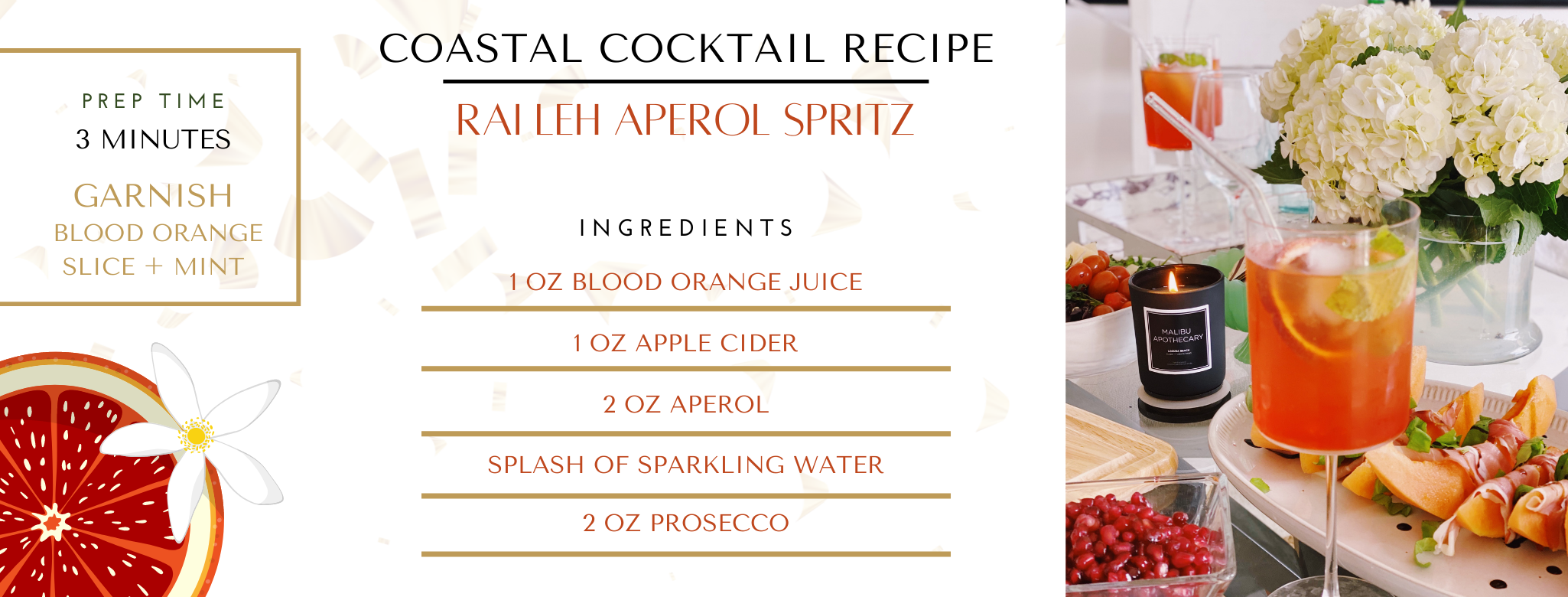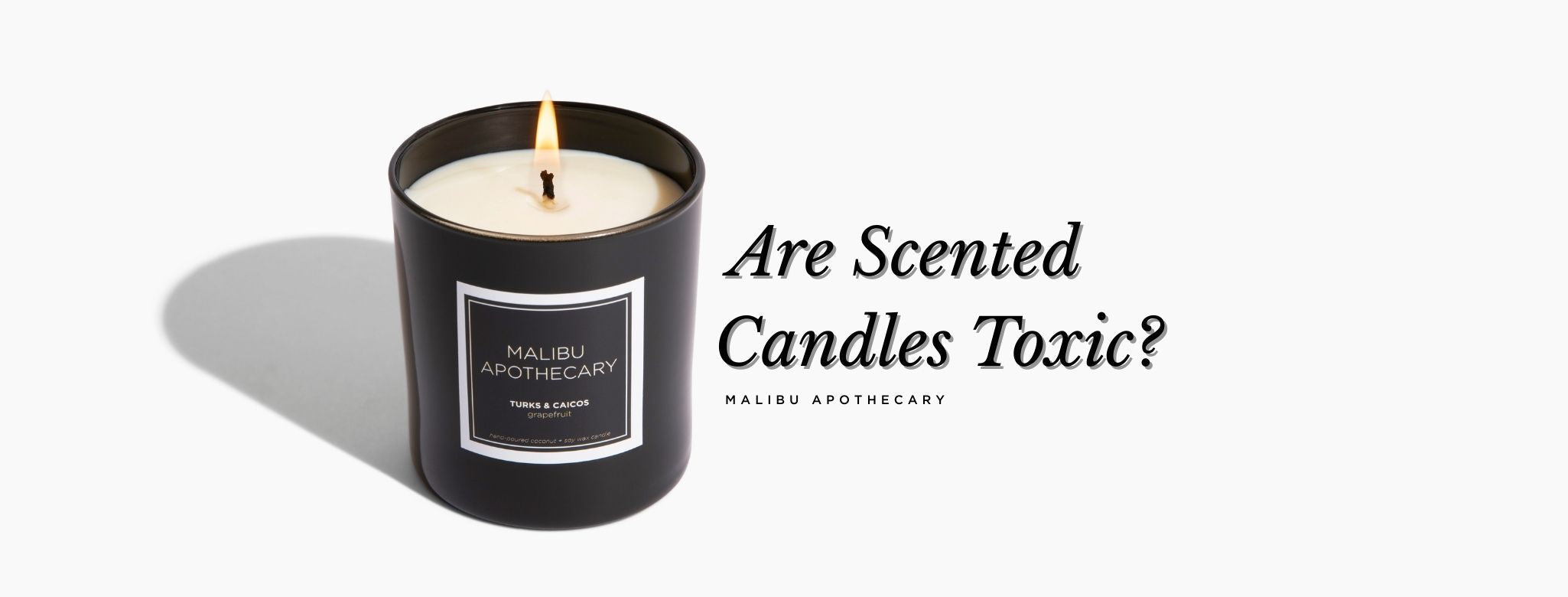Candles are meant to offer you a bit of light and luxury to your space and enhance your environment. So why should setting the mood for your space come at a cost to your safety? Did you know most candles today are made with carcinogenic ingredients? The good news? Not all candles are toxic! When we look at the harm candles or fragrance can cause, we must first look at a few components: the fragrance, wax, and wick. Let’s take a look at each of these factors and what to look out for when purchasing your next scented escape!

Which Scents Make Sense?
Fragrance or the “juice,” as commonly referred to by perfumerers, can either be made from oils of natural or man-made origin. Explained more in depth in our Natural vs. Synthetics series, neither is necessarily good or bad but must be investigated further to know if it is harmful. Overall, you should avoid scents that contain any parabens or phthalates.
The Fragrance Loophole
The reason why toxic chemicals are so commonly found and so rarely noticed in fragrance is because while companies are required to list ingredients on the label, you may only see the catch-all term, “fragrance” or “parfum” listed for a scent as this “fragrance loophole” in federal labeling law means that fragrance ingredients need only be listed under these generic terms. This is because the FDA does not require companies to share the individual constituents of fragrance due to intellectual property laws that protect perfumers and the limited legal options available to protect against olfactory copies.
So, which fragrances? Which products? Well, unless you have a degree in ingredient chemistry or personally manufacture these products, it’s hard to know or understand. In the U.S. and outside of California’s Prop 65 law, fragrance or candle brands have no obligation to be transparent to consumers about the nature of the specific ingredients used. Even when ingredients are listed it can be complicated to understand without a knowledge of chemistry, like the safe synthetic that mimics the scent of Jasmine, “Meth-2(2-pentenyl)2-cyclopenten-1-one/3-.” 1 Unfortunately, it is not as easy as being able to just pronounce or recognize the names of ingredients. This can make it difficult for a majority of consumers to even know what they need to look or watch out for.
Are Naturals Better?
In short, the answer is no. Just because a scent is natural, does not mean that it is safer or more sustainable. All fragrances start as molecules regardless if they are man-made or naturally occurring. In fact, “most of the 26 allergens identified by the European Union (EU) regulations are molecules that are present in natural extracts,” including “limonene the principal constituent of mandarin essential oil.” Additionally, there can be sustainability concerns with some natural ingredients such as Oud, which is linked to poaching and illegal logging as it's more expensive per ounce than gold, or Gardenia which requires 6,600lbs - 11,000lbs of raw material in order to obtain 2.2 lbs. Luckily, there are safe and sustainable, synthetic alternatives to these natural fragrances that can be used to replicate their aromas, are formulated to burn, and safe to use.
How to Determine if your Scents are Safe
Lookout for fragrances classed with CMR (carcinogenic, mutagenic, or reprotoxic toxic to reproduction, with some presenting a risk of endocrine disruption). If a label says nothing more than “fragrance,” you should reach out to the company directly to see if it contains any of these CMR ingredients that could likely be hiding behind the generic term as a loophole.
Common Toxins to Avoid:
- Carcinogens: Cancer causing materials *fragrance & wax*
- Allergens & Irritants: A substance that can cause an allergic reaction or injuries to the skin, the eyes or airways after a single exposure. Common in natural essential oils. *fragrance*
- Mutagens: Harm DNA cells *fragrance & wax*
- Organ & Reproductive Harm: Organ toxicity including toxins that can cause adverse effects or disease within specific bodily organs or adversely affect reproductive organs and increase the risk of birth defects. *fragrance & wax*
- Endocrine Disruptor: May mimic or interfere with the body’s hormones, known as the endocrine system *fragrance*
- Environmental Harm: Causing harm to the environment or sustainability concerns *fragrance & wa
- *
- Neurological Toxicity: Occurs when the exposure to natural or manmade toxic substances (neurotoxicants) alter the normal activity of the nervous system. *fragrance & wax*

What’s the Matter with our Wax?
Most candles today use paraffin wax. Paraffin is made using a petrochemical derived from petroleum as a black sludge from the bottom of oil barrels. In an effort to commercialize the paraffin, it goes through a refinement process where it is whitened using bleaching agents that are 10x stronger than household bleach. Toxic dioxins, known to be carcinogenic, are created through the refinement process. These dioxins are harmful for both our bodies and the environment. They can cause negative effects on our reproductive, development, and immune systems. Additionally, carcinogenic chemicals such as Benzene and Toluene are released when the candle is burned.
What Candle Wax Should I Buy?
When buying candles, look for all-natural candles made with either beeswax, coconut wax, or soy wax. You can even buy one with a combination of any of those as well. Watch out for confusing terms such as “soy wax blend” that can be deceiving as most “blends” are actually just paraffin wax with a small percentage of natural wax. The combination of coconut and soy wax is the best performing, sustainable wax we have found that has a strong hot throw, low soot output for a clean-burning candle that’s not harmful to your health!

What’s in Our Candles?
Malibu Apothecary candles use sustainably sourced essential oil-infused fragrances and safe synthetic fragrance oil with all-natural coconut & soy wax. Our fragrance is made with a combination of essential oils and safe synthetic ingredients, when it is less allergen-inducing, more sustainable, or safer than the essential oil option. or less allergen-inducing.Natural essential oils are always our first choice, but if a natural ingredient fails on sustainability requirements or is allergen-inducing, we look to safe synthetics. We advocate for whatever is the most sustainable for our planet and bodies. Carcinogens, parabens, and toxins will never be found in our products as these compounds are linked to neurotoxicity, organ toxicity, DNA cell damage, environmental harm, and even more.

We believe candles and scent should enhance your space and life, not harm you. That’s why we craft all our scents to be safe. With Malibu Apothecary’s clean coastal inspired fragrances, you can breathe easy knowing our ingredients are non-toxic. So, instead of sacrificing saftey, find yourself the perfect Malibu Apothecary scented escape to transport you back to your favorite destination.
Sources:
“Fragrance.” Safe Cosmetics, www.safecosmetics.org/get-the-facts/chemicals-of-concern/fragrance/. 1
CandleScience. “Introducing Candlescience Clean Scents.” CandleScience, www.candlescience.com/introducing-candlescience-clean-scents. 2
https://www.ewg.org/news-insights/testimony/statement-jane-houlihan-cosmetics-safety
https://www.ewg.org/consumer-guides/dirty-dozen-endocrine-disruptors
https://www.nontoxicrevolution.org/blog/wtf-fragrance
https://www.niehs.nih.gov/health/topics/agents/endocrine/index.cfm
https://www.osha.gov/carcinogens
Read more

Try this twist on Aperol Spritz! For those who fall in love with fall flavors, try this Blood Orange cocktail mix. Inspired by the bright blood orange sunsets cast in the Adaman sea, this refreshin...

Are you looking to brighten up your living room? Do you want your bedroom to feel zen and cozy? The best way to make your home unique to you is to scatter around your favorite candles: stylish, coz...

Leave a comment
All comments are moderated before being published.
This site is protected by hCaptcha and the hCaptcha Privacy Policy and Terms of Service apply.